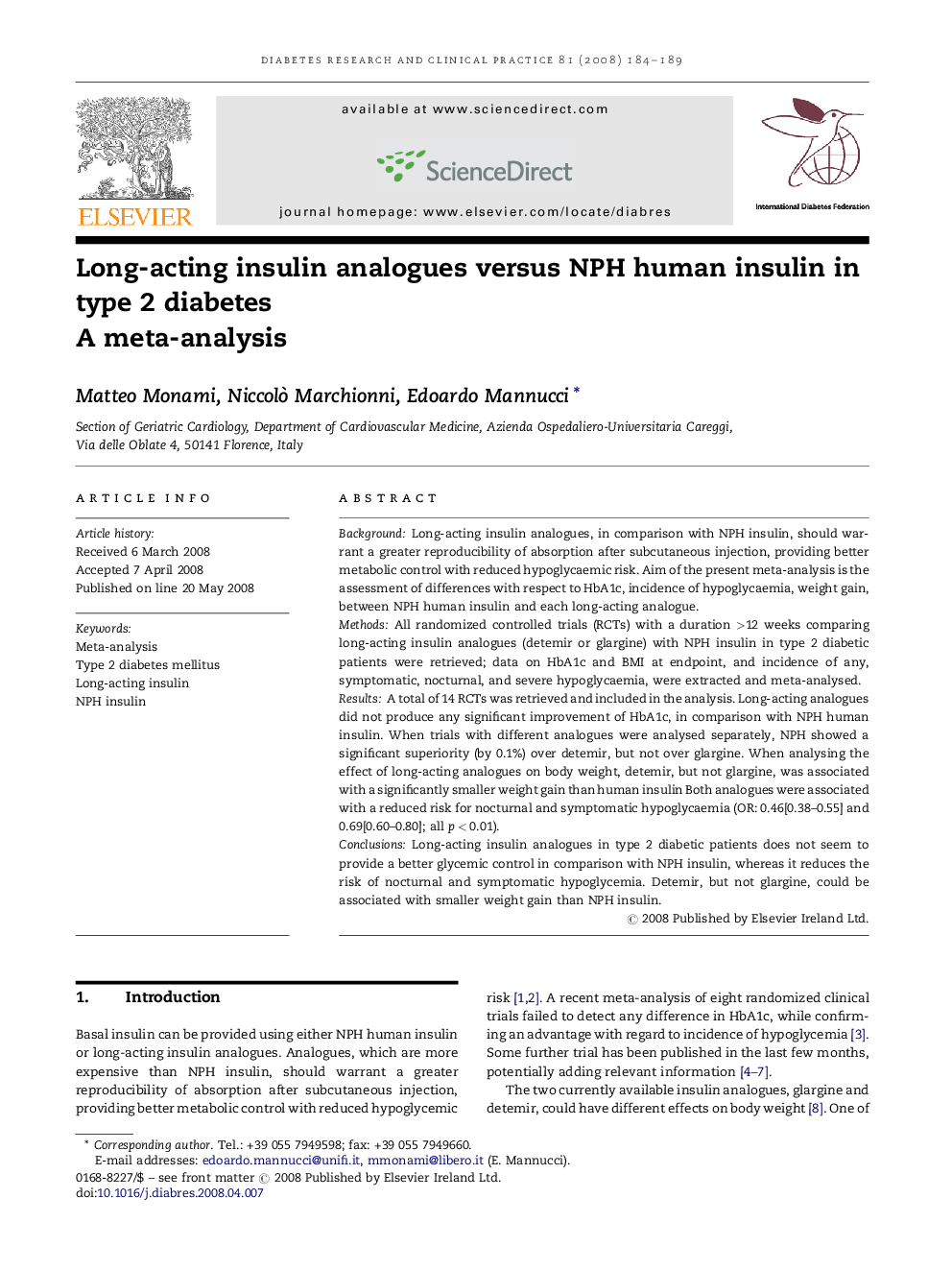| کد مقاله | کد نشریه | سال انتشار | مقاله انگلیسی | نسخه تمام متن |
|---|---|---|---|---|
| 2798007 | 1155674 | 2008 | 6 صفحه PDF | دانلود رایگان |

BackgroundLong-acting insulin analogues, in comparison with NPH insulin, should warrant a greater reproducibility of absorption after subcutaneous injection, providing better metabolic control with reduced hypoglycaemic risk. Aim of the present meta-analysis is the assessment of differences with respect to HbA1c, incidence of hypoglycaemia, weight gain, between NPH human insulin and each long-acting analogue.MethodsAll randomized controlled trials (RCTs) with a duration >12 weeks comparing long-acting insulin analogues (detemir or glargine) with NPH insulin in type 2 diabetic patients were retrieved; data on HbA1c and BMI at endpoint, and incidence of any, symptomatic, nocturnal, and severe hypoglycaemia, were extracted and meta-analysed.ResultsA total of 14 RCTs was retrieved and included in the analysis. Long-acting analogues did not produce any significant improvement of HbA1c, in comparison with NPH human insulin. When trials with different analogues were analysed separately, NPH showed a significant superiority (by 0.1%) over detemir, but not over glargine. When analysing the effect of long-acting analogues on body weight, detemir, but not glargine, was associated with a significantly smaller weight gain than human insulin Both analogues were associated with a reduced risk for nocturnal and symptomatic hypoglycaemia (OR: 0.46[0.38–0.55] and 0.69[0.60–0.80]; all p < 0.01).ConclusionsLong-acting insulin analogues in type 2 diabetic patients does not seem to provide a better glycemic control in comparison with NPH insulin, whereas it reduces the risk of nocturnal and symptomatic hypoglycemia. Detemir, but not glargine, could be associated with smaller weight gain than NPH insulin.
Journal: Diabetes Research and Clinical Practice - Volume 81, Issue 2, August 2008, Pages 184–189